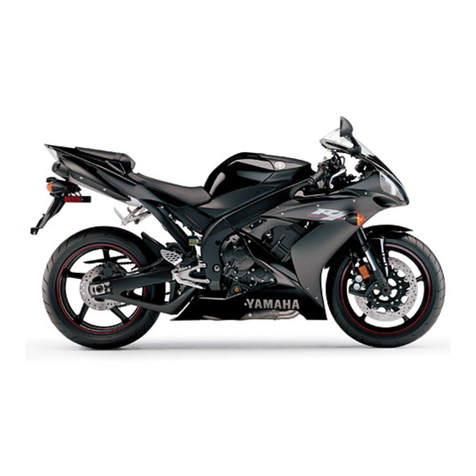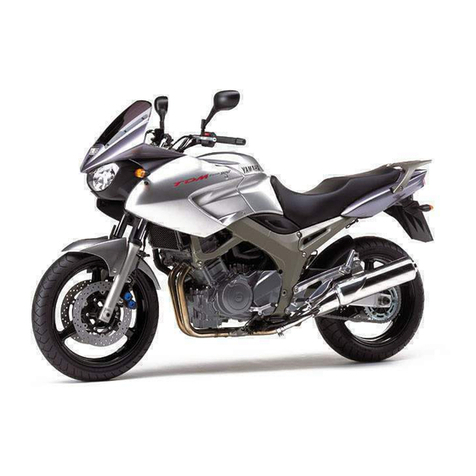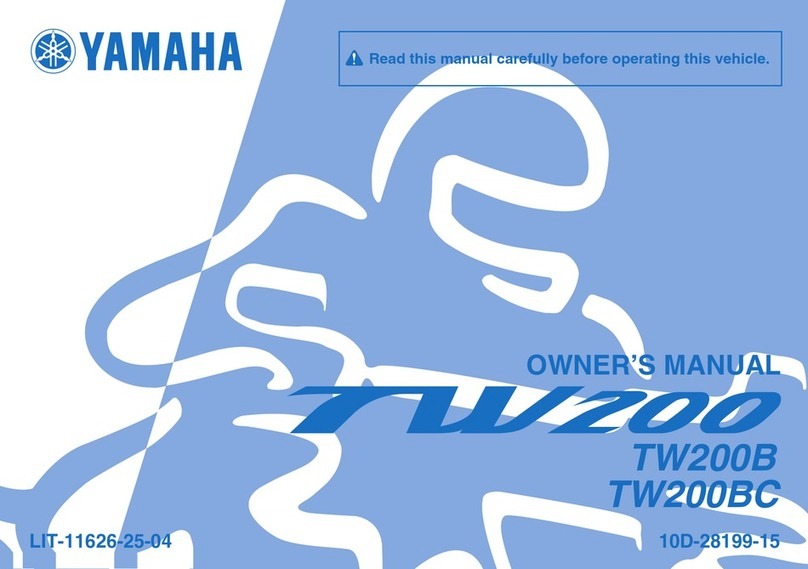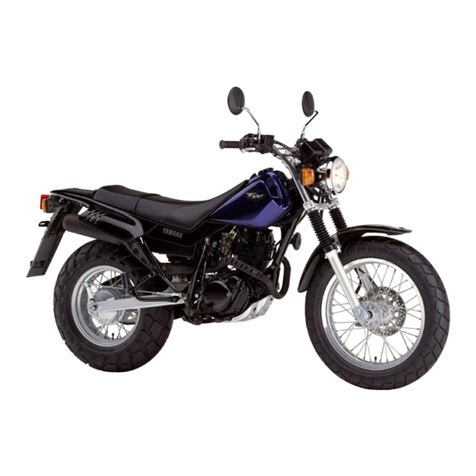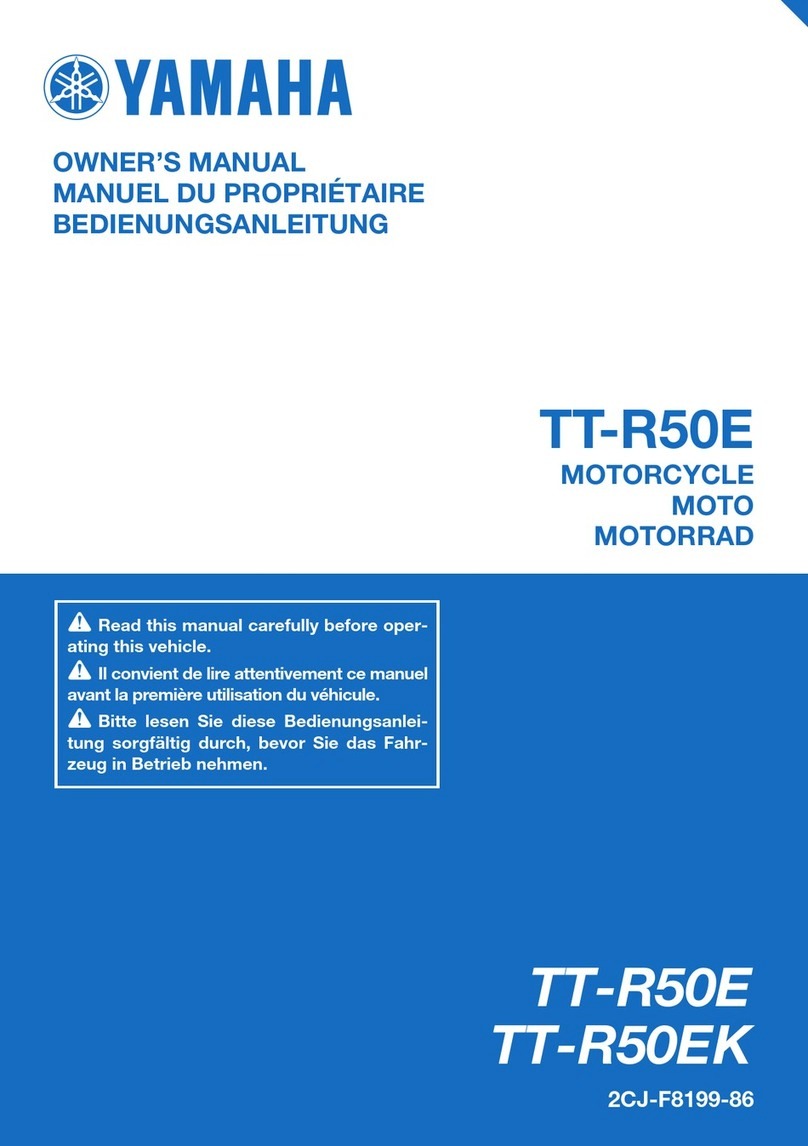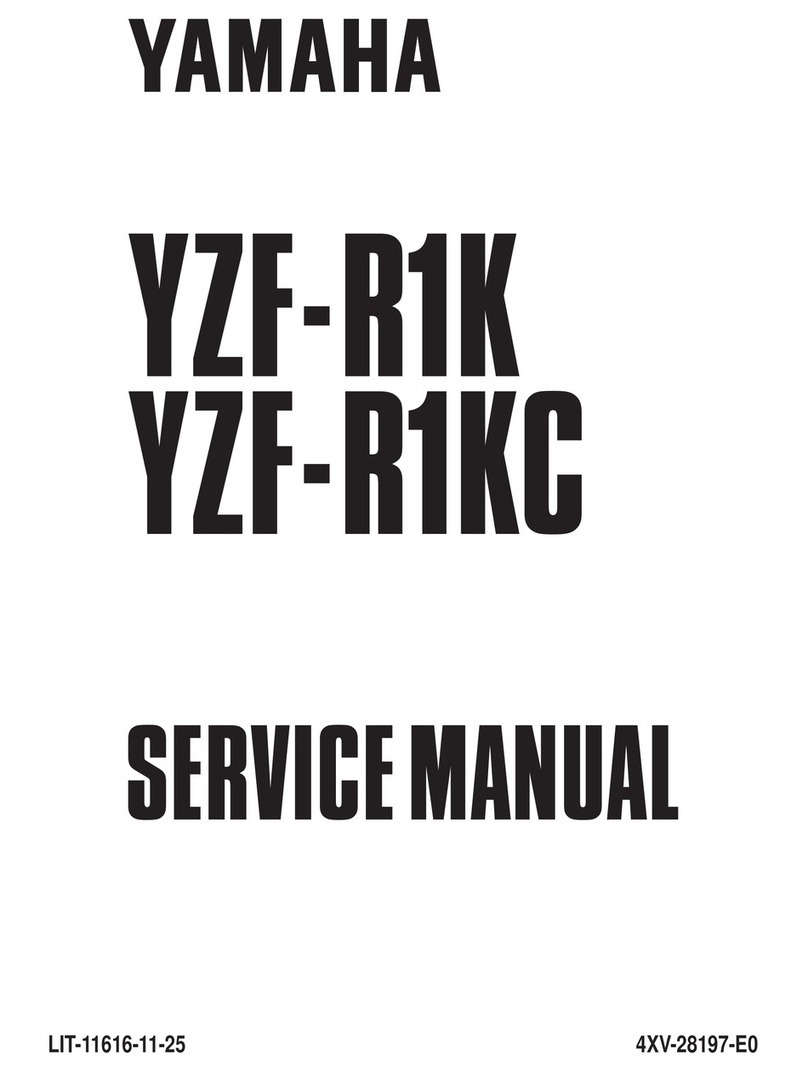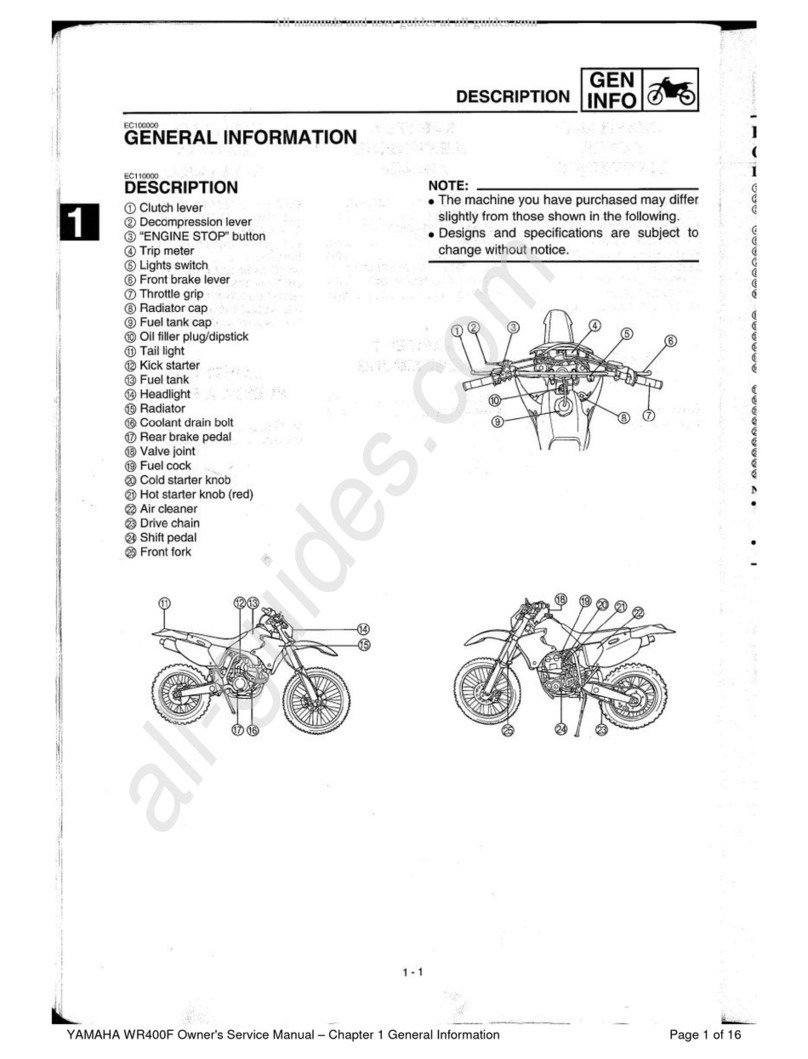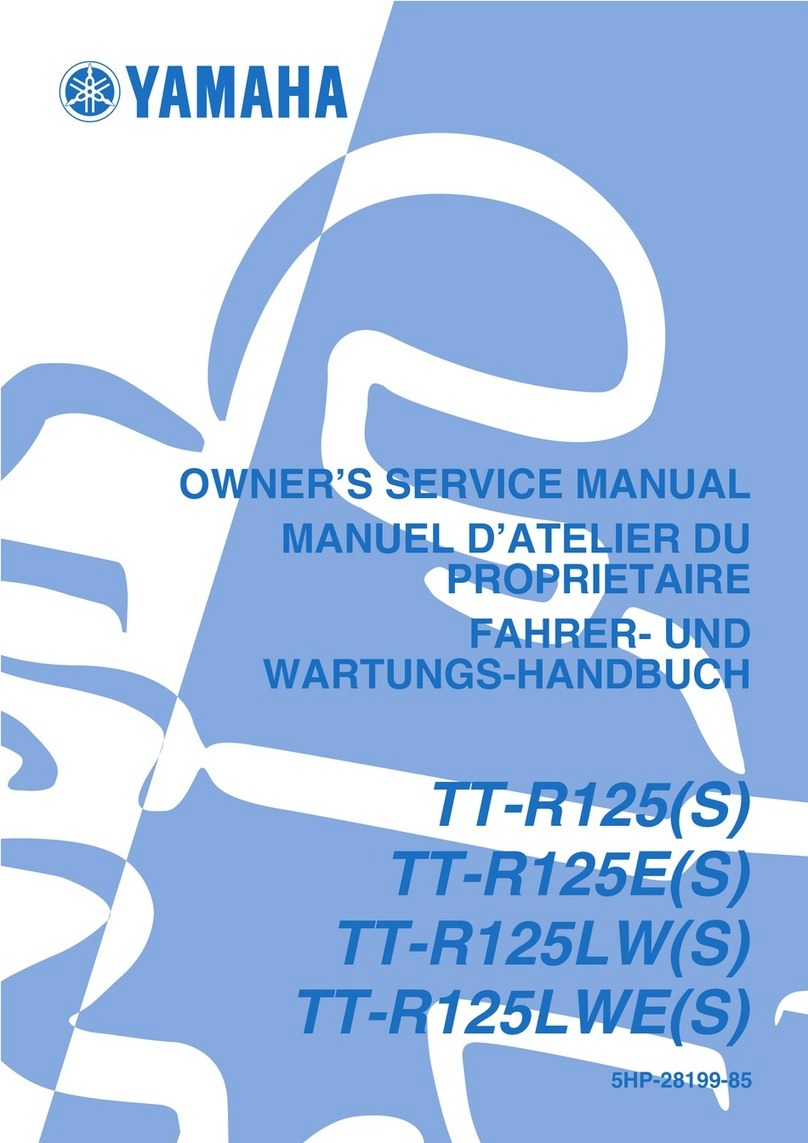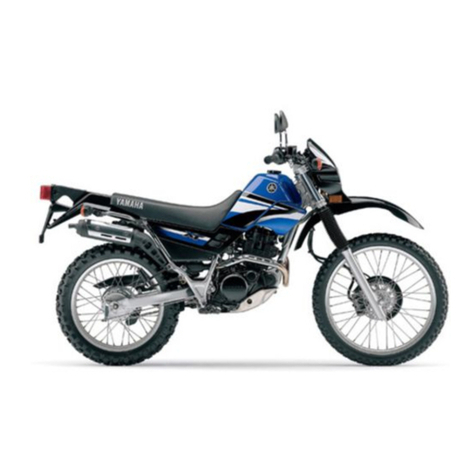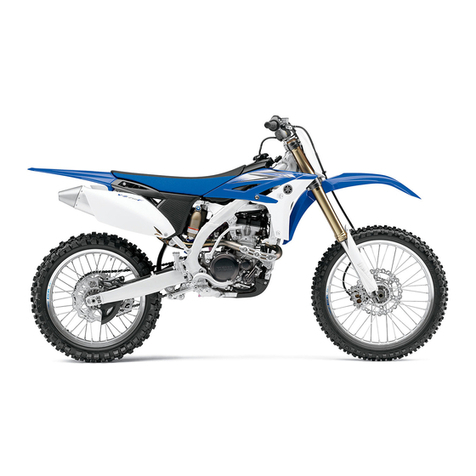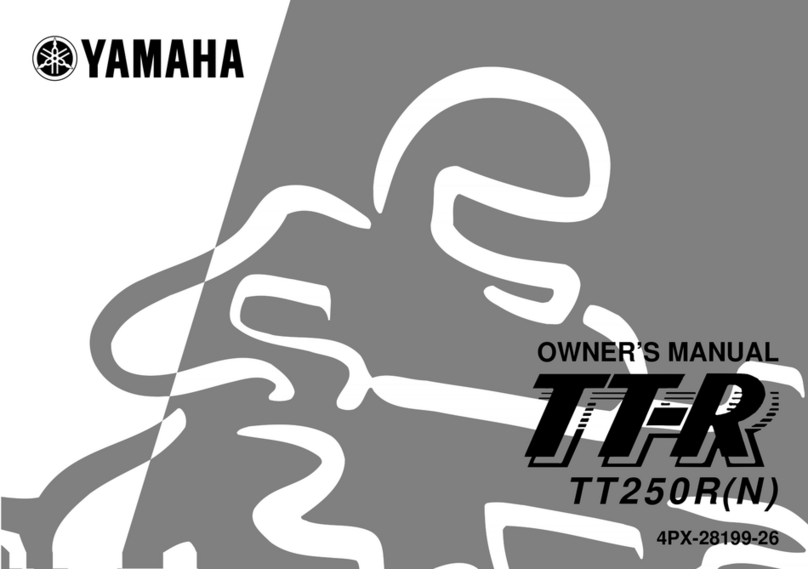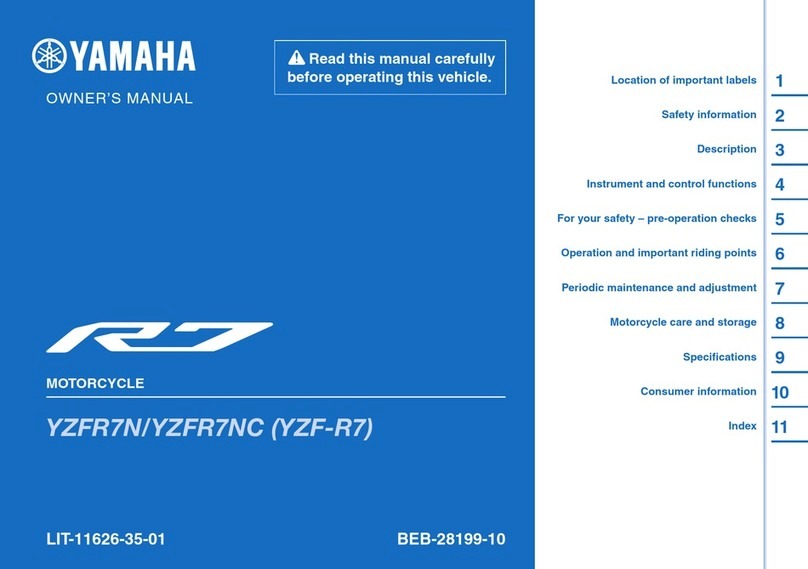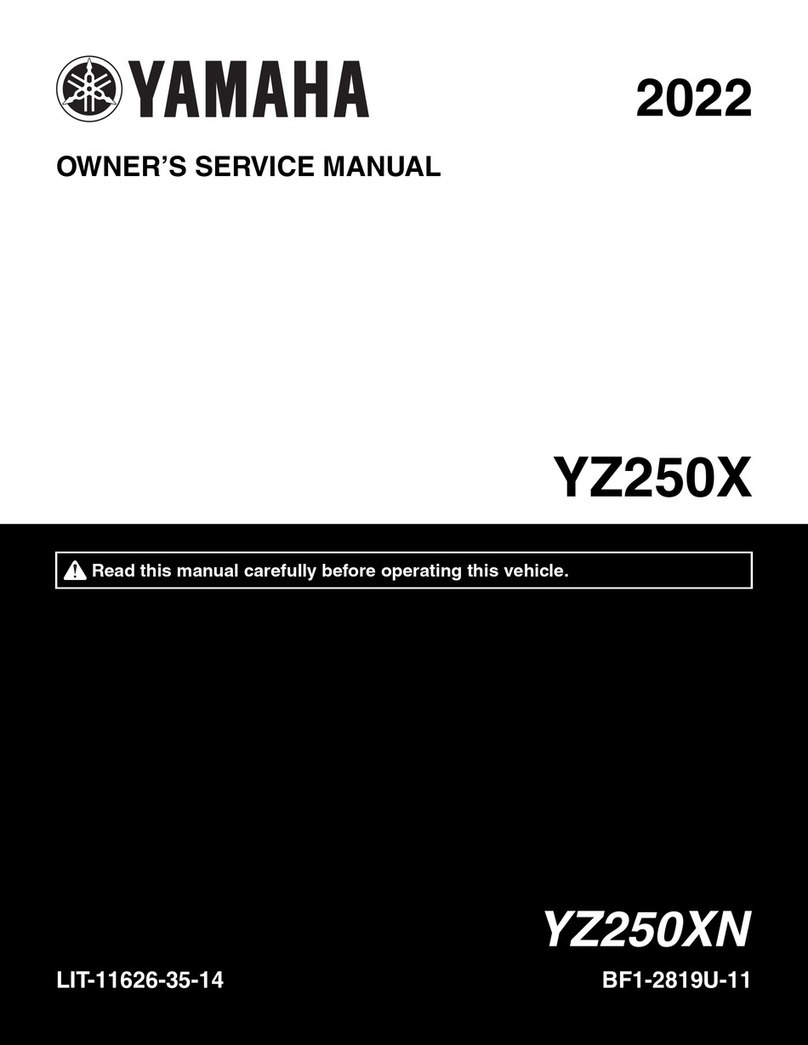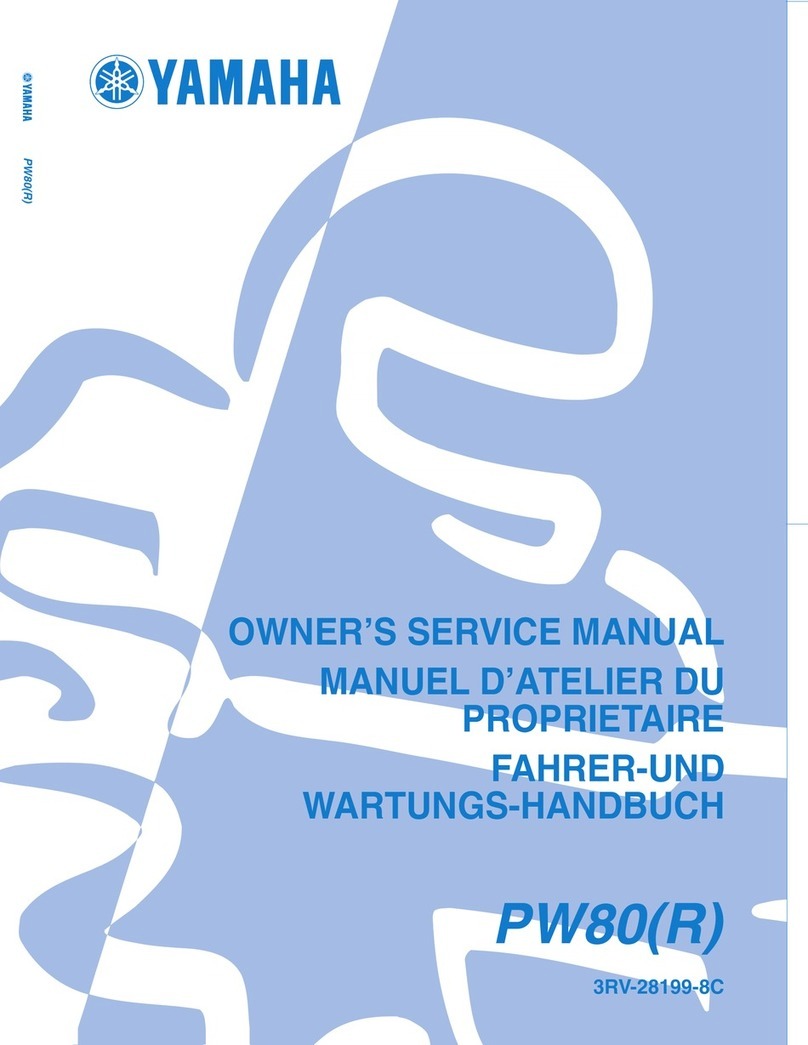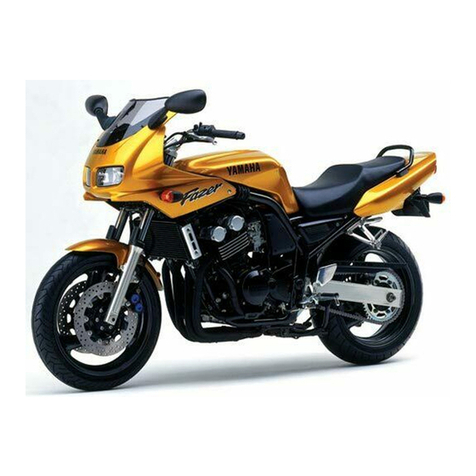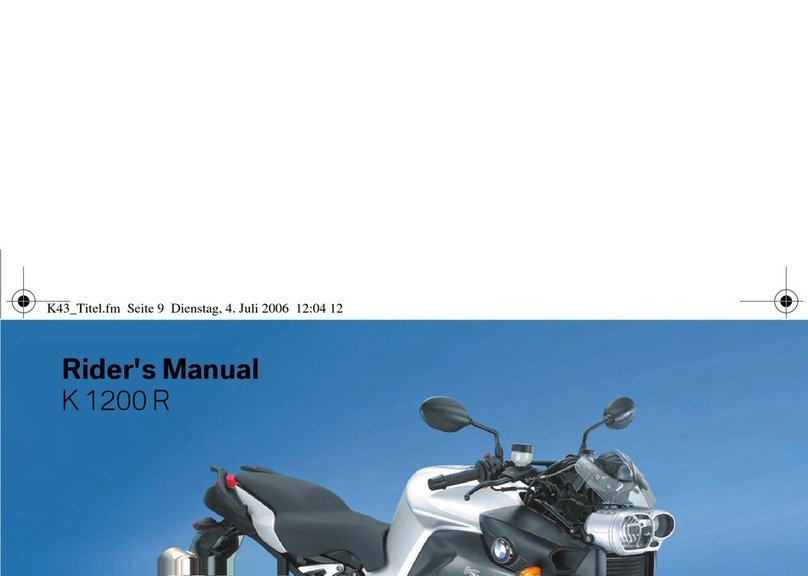
Table of contents
Safety information............................ 1-1
Description ....................................... 2-1
Left view ......................................... 2-1
Right view....................................... 2-2
Controls and instruments ............... 2-3
Instrument andcontrol functions... 3-1
Immobilizer system......................... 3-1
Main switch/steering lock............... 3-2
Handlebar switches........................ 3-3
Indicator lights and warning
lights............................................ 3-5
Cruise control system..................... 3-8
Display.......................................... 3-11
MENU screen ............................... 3-15
D-mode (drive mode).................... 3-25
Clutch lever .................................. 3-25
Shift pedal .................................... 3-26
Quick shift system........................ 3-26
Brake lever.................................... 3-26
Brake pedal .................................. 3-27
ABS .............................................. 3-27
Traction control system................ 3-28
Fuel tank cap................................ 3-30
Fuel............................................... 3-31
Fuel tank overflow hose ............... 3-33
Catalytic converter ....................... 3-33
Seats ............................................ 3-34
Adjusting the rider seat height...... 3-35
Helmet holder ............................... 3-37
Storage compartment...................3-38
Windshield ...................................3-38
Adjusting the headlight beams .....3-38
Handlebar position .......................3-39
Adjusting the front fork .................3-39
Adjusting the shock absorber
assembly....................................3-41
Auxiliary DC jack ...........................3-43
Auxiliary DC connector .................3-44
Sidestand ......................................3-44
Ignition circuit cut-off system .......3-45
For your safety – pre-operation
checks ...............................................4-1
Operation andimportant riding
points .................................................5-1
Starting the engine..........................5-1
Shifting ............................................5-2
Tips for reducing fuel
consumption................................5-4
Engine break-in...............................5-4
Parking ............................................5-5
Periodic maintenance and
adjustment ........................................6-1
Tool kit ............................................6-2
Periodic maintenance charts ..........6-3
Periodic maintenance chart for the
emission control system..............6-3
General maintenance and
lubrication chart .......................... 6-5
Removing and installing the
panel............................................ 6-9
Checking the spark plugs............. 6-10
Canister ........................................ 6-11
Engine oil ...................................... 6-11
Why Yamalube.............................. 6-13
Coolant ......................................... 6-14
Air filter element............................ 6-15
Checking the engine idling
speed ........................................ 6-15
Checking the throttle grip free
play............................................ 6-16
Valve clearance............................. 6-16
Tires .............................................. 6-16
Cast wheels .................................. 6-19
Adjusting the clutch lever free
play............................................ 6-19
Checking the brake lever free
play............................................ 6-20
Brake light switches ..................... 6-20
Checking the front and rear
brake pads ................................ 6-21
Checking the brake fluid level ...... 6-21
Changing the brake fluid .............. 6-23
Drive chain slack........................... 6-23
Cleaning and lubricating the
drive chain................................. 6-25
Checking and lubricating the
cables........................................ 6-25
UB1JE1E0.book Page 1 Thursday, October 11, 2018 10:43 AM
